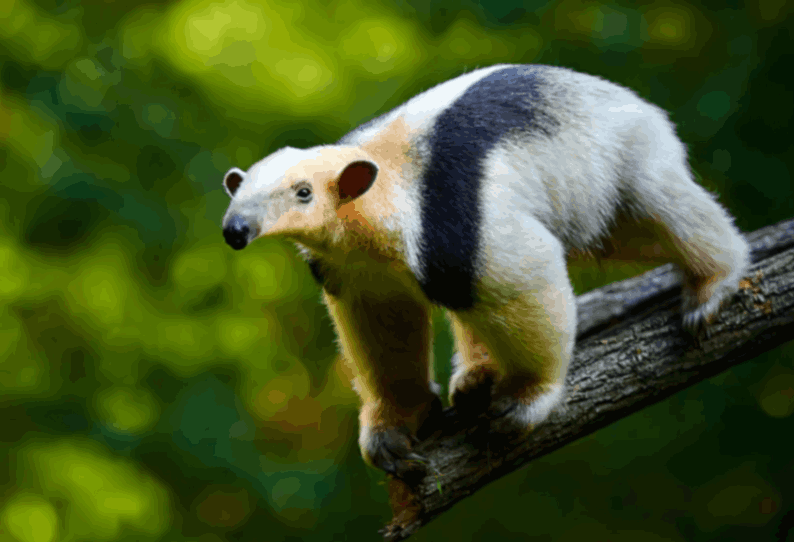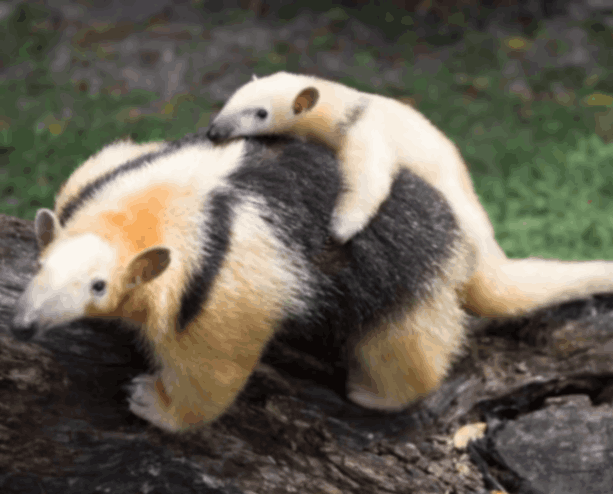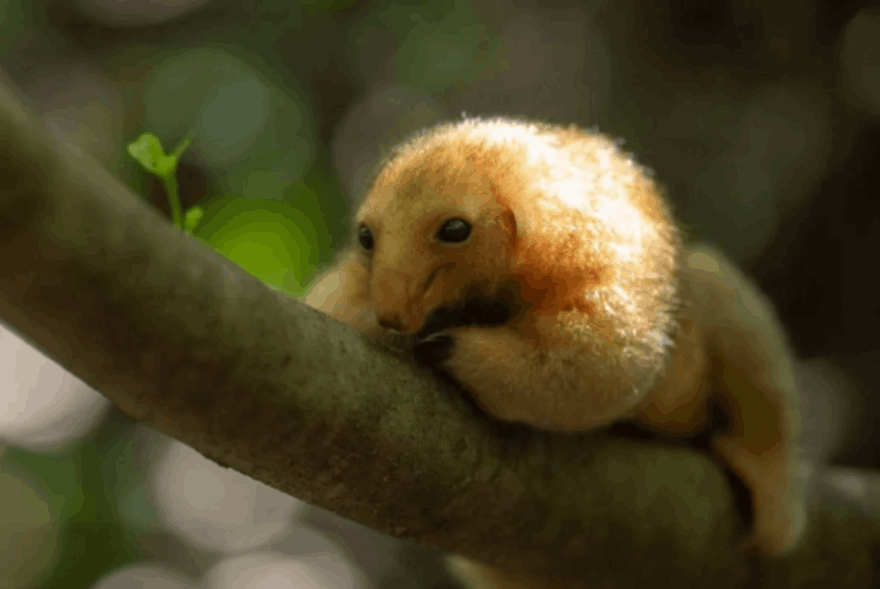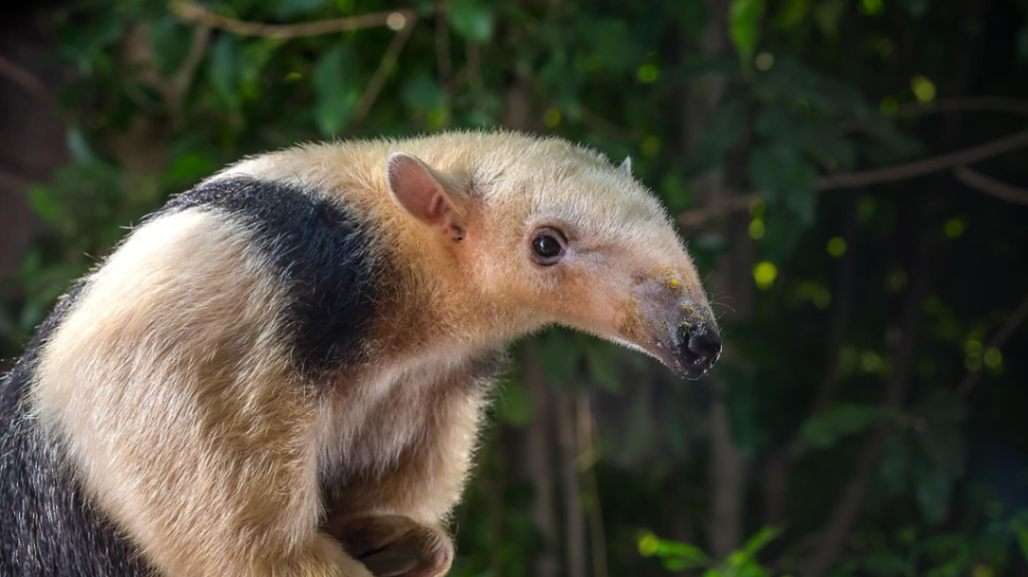The little anteater, also known as the jungle hater, you may have heard about before. Do you know the reason for this name? Below I will tell you on TekeTrek more details about it.

An introduction to the little anteater
The small anteater is known as the tamandua (tuh man doo wah). It is called small because it is smaller in size than the giant anteater.
A mammal whose home is found in trees or the ground. It is active at night and nests in hollow tree trunks during the day.
Description of the anteater
The little anteater has small eyes and poor vision, but its sense of hearing and sunlight is good.
- The length of the small anteater ranges from 1.8 to 2.9 feet (53 to 88 cm).
- While the length of its tail ranges from 1.3 to 1.9 feet, equivalent to (40 to 59 cm).
- Its weight ranges from 4.5 to 17 pounds, which is equivalent to (2.1 to 7.7 kg).
- It has thick, rough fur that is light yellow, tan, brown, or grey.
- It has circular, two-toed feet, with two claws on the front feet, which can encircle a branch for the creature to cling to.
- The claws are located on the second and third toes, the third toe being much larger than the second. While the fourth toe is very small, it does not bear a claw.
- The hind feet have four toes of the same length, each bearing a long claw, and the vestigial hallux is not seen.
- Its wide, flat, overlapping ribs form an armored inner shell to protect the chest.
Food of the anteater
The small anteater feeds on ants, where:
- The mouth and tongue help him eat about 9,000 ants a day. He does not have teeth, but the stomach grinds the food after swallowing it. Its 16-inch sticky tongue equipped with spines helps it steal ants from their home.
- It uses its strong sense of smell to search for food, such as termite mounds.
- The anteater is fed by several predatory animals, such as tigers and small cats such as margay, provided that it does not have a bad smell.

Reproduction in anteaters
The anteater searches for a mate during the fall, then gives birth to one baby at the beginning of the spring and is cared for only by the female.
- The baby anteater does not resemble its parents, as it has a solid-colored coat, open eyes, and giant claws.
- A baby anteater spends the first part of its life on its mother’s back, but she places it on a branch for a short period to search for food.
Habitats of small anteaters
The small anteater is found in Oaxaca and southern Veracruz in Mexico, and you can also find it in Central America except El Salvador, in addition to Ecuador, northern Peru, Bolivia and Brazil.
- There is a group of it in the North Atlantic Forest, east of Brazil.
- Hariri is also located on the island of Trinidad.
- It inhabits forests such as semi-deciduous, tropical, and mangrove forests.
Interesting facts about anteaters
Among the most prominent facts about the little anteater:
- The anteater has the lowest body temperature of a mammal, at 91°F (33°C).
- Its stomach contains more than a pound of ants (0.45 kg).
- The anteater is nicknamed the “jungle stink” because of its unpleasant odor, as it can spray a foul secretion four times stronger than that of a skunk.
- The anteater’s location is known by its unpleasant odor, which sends it in the opposite direction. If a predator approaches it, it makes a hissing sound and then releases a foul odor.
- The anteater uses strong forearms and claws for defense. If it senses danger or threat during its time in the tree, it clings to a branch with its hind feet and tail until its arms and claws are free to fight.
- Thick hair prevents angry ants from reaching the animal’s skin during the period of eating in the anthill.
- Huge front claws help it climb. It has four toes on its front feet, with a long claw on the third toe. It helps it walk on the outer edges of its front feet so that the claws do not dig into its feet, and it also uses them in defense and when digging for food.
- It makes use of its tail to grasp objects, as it acts as an extra hand or foot while climbing. He also uses it for balance when he needs to stand upright, and the thick tail makes a great pillow when sleeping.
- It uses trees for camouflage and protection from predators such as hawks and eagles.
- When threatened, it defends itself by standing on its hind legs and bringing its front legs close to its face to strike any animal with its sharp claws.
Anteaters and extinction
Pangolins in both North and South America are classified as having stable populations that are not in danger of extinction.
- It is able to adapt to different types of habitats as needed.
- Wildlife can be protected by supporting the San Diego Zoo Wildlife Alliance.


FAQ
The most common questions about the little anteater:
- Is the anteater endangered?
The small anteater is not threatened with extinction due to its ability to adapt to various weather conditions.
- Why is the little anteater called the forest vulture?
The small anteater is called smelly because it emits a foul odor from the end of its tail that protects it from predation.
- Where does the little anteater live?
You find the small anteater in Oaxaca and southern Veracruz in Mexico, and you also find it in Central America except El Salvador, in addition to Ecuador, northern Peru, Bolivia, and Brazil.
- How tall is a baby anteater?
It ranges from 1.8 to 2.9 feet (53 to 88 cm).
- How long is a baby anteater’s tail?
It ranges between 1.3 to 1.9 feet (40 to 59 cm).
- How much does a baby anteater weigh?
Its weight ranges from 4.5 to 17 pounds (2.1 to 7.7 kg).
- Are silky anteaters aggressive?
Silky anteaters are not aggressive animals.
- Can silky anteaters be pets?
They cannot be made pets due to their specialized diet and habitat requirements.
- Is the silky anteater a sloth?
Silky anteaters are not sloths; they are a separate species of anteater.


In brief, the small anteater is a tree-dwelling, carnivorous mammal that feeds on ants and is active at night.






